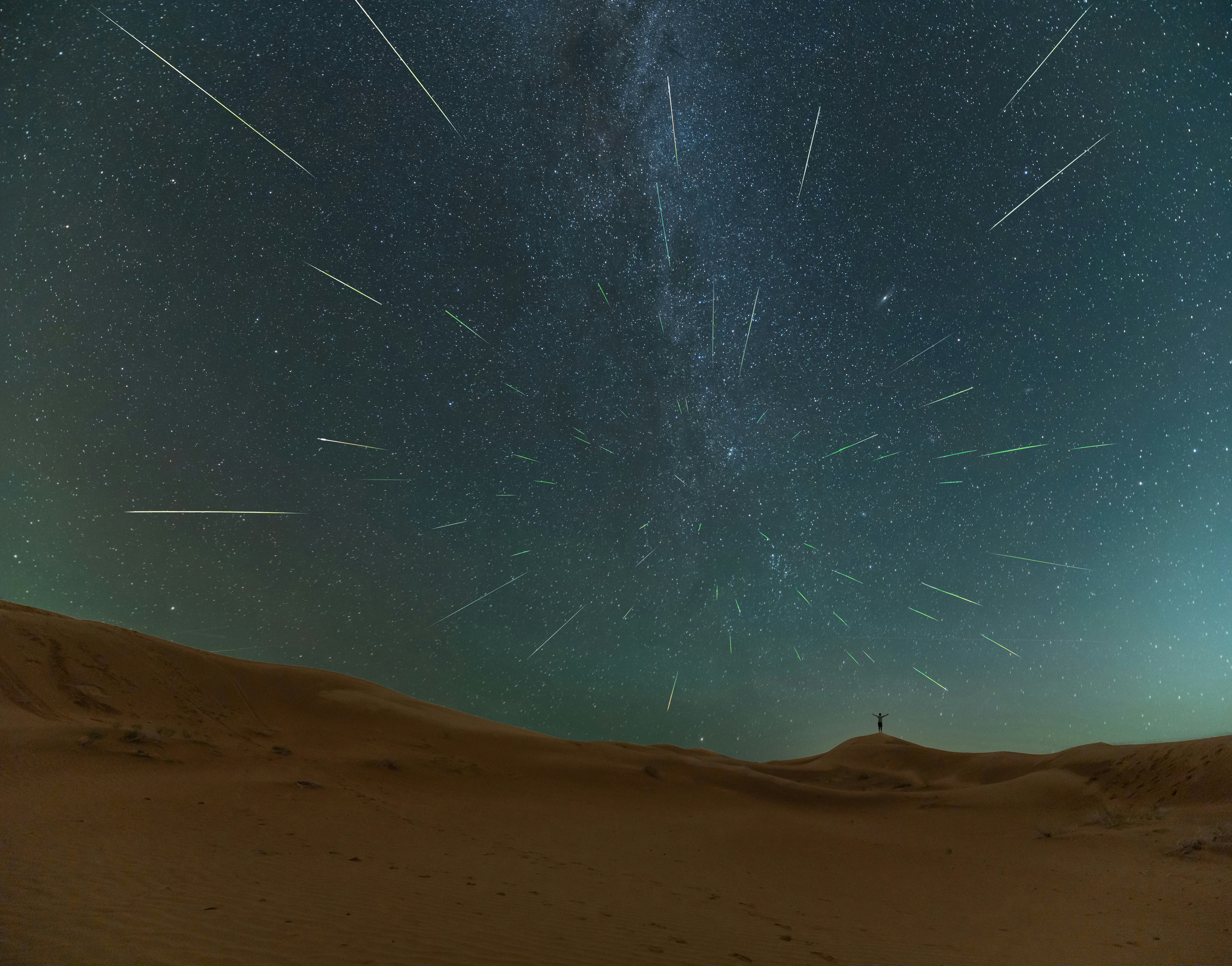
With a little luck and a lot of patience, you can see three meteor showers at once this week.
The Alpha Capricornids and the Southern Delta Aquarid meteor showers are both at their peak this week, and the Perseids are building toward their peak on August 11. Here’s your guide to this week’s meteor-watching — and how to tell them apart.

What Are This Week’s Three Meteor Showers?
Two meteor showers will peak this week, which means that Earth will be passing through the densest part of the dusty debris trails left behind by comets, so dust and tiny bits of rock will patter against our upper atmosphere like raindrops.
The Southern Delta Aquarids will peak on the night of July 29 to July 30, in the dark hours between midnight and predawn. Skygazers in the tropical latitudes of the southern hemisphere will have the best view of this shower, but it will be visible from the southern United States, especially low in the southern sky. These meteors are fragments of very ancient dust from the nucleus of Comet 96P/Machholz; based on astronomers’ simulations, these dust grains broke free of the comet around 20,000 years ago, as the Sun’s heat melted the ice holding them in place.
On the night of July 30 to July 31, in the same late-night time slot, the Alpha Capricornid meteors will reach their peak. These meteors are the remnants of Comet 169P/NEAT, which appears to have had a very bad day around 4,00 years ago, when half of the comet’s nucleus collapsed into a cloud of dust.
Because everything in space is in constant motion, and because the debris cloud from 169P/NEAT’s catastrophe is still evolving, it’s going to become a much bigger deal in the 23rd century than it is right now. Today, we’re passing through the edge of the comet’s debris cloud, but by 2200, we’re going to pass right through the densest part of it, and future Earthlings will see a show “stronger than any current meteor shower,” according to a 2010 study.
Meanwhile, the better-known Perseid meteor shower is also visible now, although it’s not quite as spectacular as it will be when it peaks the night of August 11 through August 12.
How to See Three Meteor Showers This Week
To see the Southern Delta Aquarids and the Alpha Capricornids, look low on the southern horizon between midnight and dawn. The Southern Delta Aquarids will seem to radiate from a point in the southwestern sky, and they’ll most likely be faint streaks of light, without long trails or bright flares. On the other hand, the Alpha Capricornids are known for their bright fireballs, but they only show up about five times an hour, so catching one in the act may take some patience.
So if you see a faint streak that seems to radiate from somewhere in the southwestern sky, it’s probably a Delta Aquarid, a 20,000-year-old bit of dust from Comet 96P/Macholz. If you see a bright fireball that seems to come from somewhere in the southern sky, it’s probably an Alpha Capricornid, a fragment of debris from the collapse of Comet 169P/NEAT around the time the Great Pyramid was being built. And if you see a meteor that seems to come from the northeastern sky, it’s probably a Perseid, part of the dust trail from Comet Swift-Tuttle.
The sky should be nice and dark this week, lit only by a waning crescent Moon. Find the darkest place you can with a clear view of most of the sky (especially the southern horizon), and turn off your headlights, flashlights, and cell phones. Give your eyes about 30 minutes to adjust to the darkness. If you can, lie on your back so you can look up at as much of the sky as possible. Be patient, and good luck.







